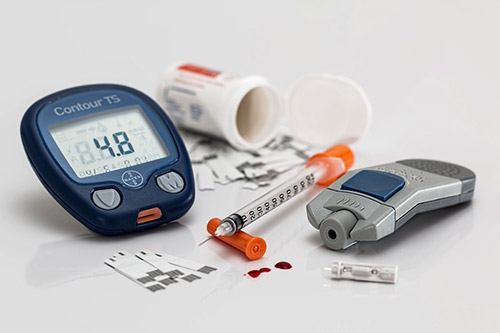There are many fertility medications on the market, but Clomid drug is the most well-known and widely used. This is because it treats ovulation problems which make up around 25% of the infertility causes in women. This article will tell you about using Clomid for fertility treatment, including its success rates, dosages and side effects.
 Clomid or Clomiphene Citrate drug is a fertility medication that is used for treating ovulation disorders. Many women have been using it clinically for more than thirty years and it can be taken orally to induce or regulate ovulation. Your doctor might recommend this drug if you are not able to ovulate or if your fertility problem is linked to a luteal phase defect. The drug will work by stimulating the pituitary gland to generate higher levels of the LH and FSH hormones which control ovulation.
Clomid or Clomiphene Citrate drug is a fertility medication that is used for treating ovulation disorders. Many women have been using it clinically for more than thirty years and it can be taken orally to induce or regulate ovulation. Your doctor might recommend this drug if you are not able to ovulate or if your fertility problem is linked to a luteal phase defect. The drug will work by stimulating the pituitary gland to generate higher levels of the LH and FSH hormones which control ovulation.
Using Clomid for Fertility Treatment
Clomid was recorded as one of the first drugs used clinically to treat infertility problems and had been studied originally as a potential medication for birth control. In addition, primary care doctors routinely prescribe Clomiphene Citrate for females who are ovulating normally but have infertility issues which are unexplained otherwise. Simply put, doctors discover the ovulation inducing properties in the drugs and start to recommend it for women who ovulate sporadically or not at all.
The drug will exert its effects on the hypothalamus gland that would signal the pituitary to create LH, FSH, and estrogen hormones. The hypothalamus gland will record lower levels of estrogen when you are using Clomid because it competes for the estrogen receptors. Healthy follicles will produce estrogen that the hypothalamus monitors and FSH production will increase/decrease according to the estrogen levels. The FSH production will drop when there is an increase in the estrogen levels. On the other hand, lower estrogen levels will increase FSH and later follicular stimulation.
You should know that Clomid will not stimulate your ovaries directly, but facilitates ovulation.
Clomid Success Rates
This fertility drug is most successful when it’s the first line of treatment for those who are experiencing irregular or no menstrual cycles. The result is 15 to 20% rate of pregnancy for each attempt. Studies show that Clomid can jump start the ovulation process in 80% of women and around 40% to 45% will get pregnant after using it for six cycles. Doctors don’t generally recommend the use of
Clomid for over six cycles. Some other alternatives will be considered if the drug is used for six cycles and pregnancy does not occur.
It’s worth mentioning that women who are ovulating because of hypothalamic or low weight amenorrhea will respond rarely to clomiphene citrate.
Clomid Dosages
You need to follow the instructions or directions that your doctor gives for Clomid use. The most common Clomid dosage is 50 mg to be taken for 5 days, ideally on three to seven or five to nine days of your cycle. The first day of your menstrual cycle must show real bleeding.
The rates for pregnancy and ovulation show similar results, whether the drug is used on day 1, 3, 4, or
5. This means that there is nothing to be concerned about if your doctor is telling you to follow a different protocol.
If you don’t get results from the 50 mg dosage, your doctor might increase it or recommend that you try the same amount for successive cycles. Doctors usually increase the dosage to 100 or 150mg. When it comes toClomid, more or high dosages are not always better, especially if you are using 150 mg or higher as this can make conception even more difficult. Since Clomid will not stimulate your ovaries directly, you won’t have to increase the dosage if ovulation is taking place regularly.
Pregnancies often occur in the first three ovulation cycles and treatment is not recommended beyond this period. There are times when it will take one to two cycles to find out the dosage for individual patients. The drug has proven to be effective in the first three to six cycles, but some women have to use it for a year or more. Not only is the extended use of Clomid expensive and unlikely to work, but can also cause damaging side effects.
Clomid Side effects
Women who use Clomid have reported a number of side effects. Some of the common ones include enlarged ovaries, hot flashes, abdominal bloating or fullness, vomiting, nausea, headache, visual disorders, and more. The side effects are normally mild and temporary and will stop if the use is discontinued. Several reports show that blurred vision can persist after clomiphene treatment, plus moodiness or mild depression can be experienced occasionally.
Conclusion
Overall, women have gotten effective results after using Clomid for fertility treatment. Pregnancy rates usually vary because of different factors, but about 80% of women start to ovulate after using this drug. Many Clomiphene Citrate pregnancies occur in three or four treatment cycles, making it a widely used drug.



